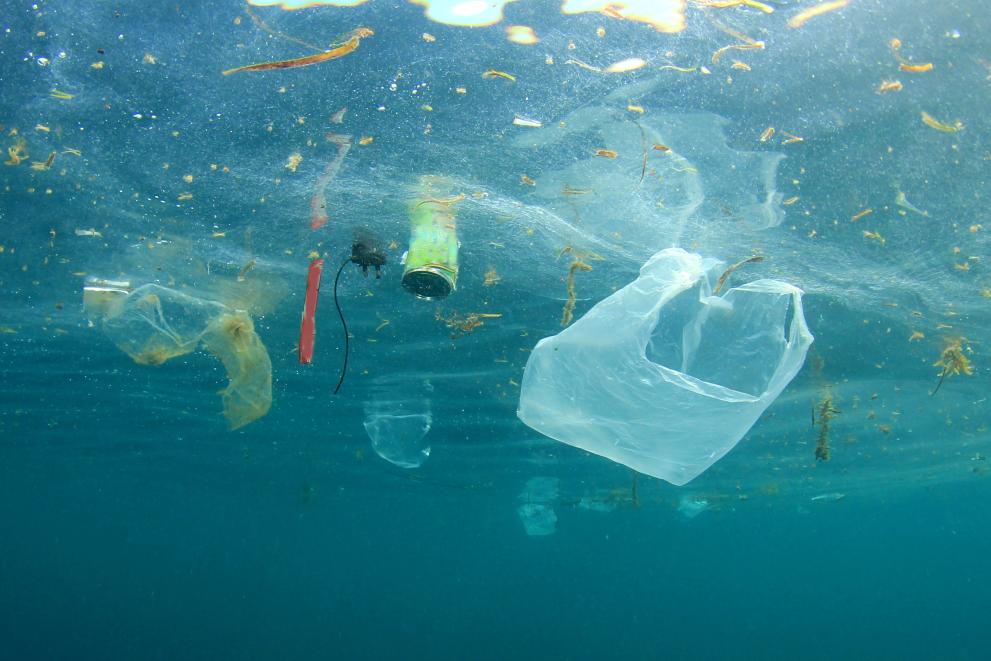
Almost 26 million tonnes of plastic is generated in Europe each year. Plastic finds its way into lakes, seas and the ocean via littering and waste disposal and through sewerage and water treatment systems, and now accounts for 80% of all marine debris. Plastic degrades in the environment – due to the sun’s ultraviolet rays and mechanical stress from waves and sand – to produce particles of different sizes, which are then found in marine, fresh and landlocked water bodies worldwide.
While plastic waste is subject to widespread monitoring schemes and environmental protection policies – including the EU’s plastics strategy and various policies specifically tackling microplastics, packaging, compostable and single-use plastics and more – these often rely on vast and skilled personnel, highly specialised equipment, or spectroscopic methods with size limits on the particles they can detect. However, plastic waste can disintegrate into hard to detect nanoparticles, raising concerns over whether it could remain in the environment undetected1. While it is complex, accurately monitoring plastic particles in aquatic environments is important to protect human and environmental health, including marine ecosystems.
This new study trialled a different method to detect and track plastics as they disintegrate in water: recombinant whole-cell bacterial biosensors, or biosensors for short. These can be designed to detect the quantity and ‘bioavailability’ (amount that reaches impactful circulation) of specific substances. According to the researchers, this type of biosensor has not yet been applied to monitor monomers (the building blocks of plastic polymers, created as polymers degrade) in aquatic environments.
The researchers built a bioluminescent biosensor using the bacterium Escerichia coli (E. coli) and based on the firefly enzyme luciferase – a sensor that would ‘switch on’ and light up when it detected acrylic acid (a plastic created when polyacrylic acid breaks down, and one widely used in consumer products). They tested a) sterile water samples, b) water samples from a freshwater lake in Western Finland that had been spiked with acrylic acid in varying concentrations, and c) saline water samples that had either polyacrylic acid or polymethyl methacrylate added (the latter to confirm that the biosensor was detecting polyacrylic acid and not this similar chemical). After adding the biosensor cells to each sample for 60 minutes the researchers measured any luminescence, which would signal detection of acrylic acid.
The biosensor cells were able to detect acrylic acid molecules in all three sample types, indicating that the approach would be suitable for screening for plastics within environmental samples of both fresh and saltwater. The bioluminescent signal was specific for only acrylic acid monomers.
Acrylic acid was found to be toxic to the biosensor bacterium (E. coli) at the highest tested concentration; however, as the acid is present in the environment at far lower concentrations, this would not prevent the use of biosensor cells for monitoring, say the researchers. In future, more robust biosensor cells could be built using another species known to be more resilient to acrylic polymers.
The technique could potentially be used to rapidly screen high numbers of samples, say the researchers. It could also be designed to target other monomers, or further tweaked to improve sensitivity or resilience by considering other bacterial species as a host. Bacterial biosensors could therefore be used to complement and enhance current monitoring methods for plastic monomers in water environments, they conclude.
Footnotes:
- Further information on nanoplastic pollution is available from: Science for Environment Policy (2023) Nanoplastics: state of knowledge and environmental and human health impacts. Future Brief 27. Brief produced for the European Commission DG Environment by the Science Communication Unit, UWE, Bristol: Available at: https://ec.europa.eu/science-environment-policy
Source:
Puhakka, E. and Santala, V. (2023) Method for acrylic acid monomer detection with recombinant biosensor cells for enhanced plastic degradation monitoring from water environments, Marine Pollution Bulletin 178 (2022): 113568.
To cite this article/service:
“Science for Environment Policy”: European Commission DG Environment News Alert Service, edited by the Science Communication Unit, The University of the West of England, Bristol.
Notes on content:
The contents and views included in Science for Environment Policy are based on independent, peer reviewed research and do not necessarily reflect the position of the European Commission. Please note that this article is a summary of only one study. Other studies may come to other conclusions.
Details
- Publication date
- 5 July 2023
- Author
- Directorate-General for Environment

